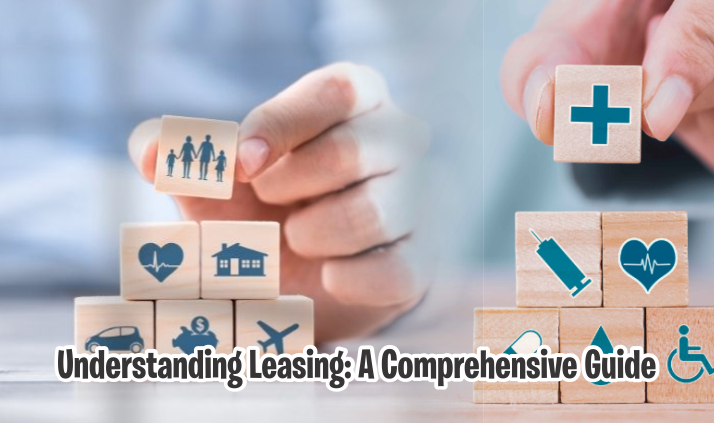Understanding Leasing: A Comprehensive Guide
What is Leasing?
Leasing, derived from the term "lease," refers to the separation of ownership and usage contracts for goods or capital over a specified period. Also known as operating leases, this arrangement involves two primary parties: the lessor (owner of the asset) and the lessee (the user).
The lessor finances the asset for the lessee's use, who, in turn, returns it periodically, with or without purchase options, based on the leasing agreement. Additionally, a supplier is involved, serving as the entity providing the desired goods, paid in full by the lessor.
The History of Leasing
Long before leasing became a widespread financing activity, the Sumerians in 2000 BC engaged in leasing to fulfill needs for water, seeds, agricultural tools, and livestock. Evidence of leasing practices continued through Babylon, Egypt, Ancient Greece, Rome, and Arab civilizations around 400 BC.
In modern times, leasing made its debut in the United States in 1850 when Tom M. Clark leased a train via operating lease. Its popularity grew globally, reaching Indonesia in 1974 with the issuance of the Business Licensing Decree.
Characteristics of Leasing
- Lease Duration and Installment Periods: Specific timeframes for operating leases and installment payment periods.
- Ownership remains with the Lessor: The lessor retains ownership of the leased object.
- Leased Objects: Typically, goods or capital needed by the lessee.
- Agreed-upon Installment Amount: A pre-determined installment amount.
Objectives of Leasing
Leasing serves as a financing source for individuals requiring goods. Its benefits extend to providing long-term and quick business financing, facilitating immediate use of assets or capital. For lessors, it offers a straightforward means of buying and selling assets.
Advantages of Leasing
- Full Financing: Provides complete financing for individuals facing financial constraints.
- Flexibility: Offers flexible payment term options.
- Simple Collateral Requirements: Less complicated collateral requirements compared to traditional banks.
- Inflation Protection: Fixed monthly or yearly installments unaffected by inflation.
- Swift Service: Quick processing and service for transactions such as motorbike leasing.
Types of Leasing
Understanding the types of leasing helps individuals choose the one that suits their needs. The five primary types include:
- Capital Leasing: Finances a company's desired purchases; for example, leasing a motorbike or car.
- Operate Leasing: Leases assets for operational needs, with the lessee returning the asset at the end of the agreed-upon period.
- Sales Type Leasing: Involves selling self-produced goods through leasing, common in various industries.
- Leverage Leasing: Includes a third party in the leasing mechanism, where the leasing company partners with a supplier.
- Cross Border Leasing: Involves financing transactions between countries for high-value items like aircraft or military equipment.
Differences Between Leasing and Credit
Based on Definition
Leasing involves providing goods or capital for a specified period, while credit refers to borrowing funds for purchasing personal items. The key difference lies in their definitions.
User Base
Leasing is typically used by capital-intensive industries, facilitating the acquisition of fleets, production machinery, and operational vehicles. On the other hand, credit is commonly used by individuals for personal purchases.
Time Limits
Leasing offers longer durations, sometimes exceeding five years, while credit typically has a maximum five-year term.
Contract Conclusion
After the operating lease period concludes, the lessor reclaims the leased item. In credit, consumers gain ownership rights after completing the payment tenure.
Default Scenarios
In the event of non-payment, lessors in leasing repossess the leased item. Credit offers options for installment-based repayments, providing flexibility in case of financial difficulties.
In conclusion, leasing is a specialized loan designed for profit-generating ventures, including safeguarding your financial health.
FAQs about Leasing
1. What's the primary difference between capital leasing and operating leasing?
Capital leasing involves financing a company's desired purchases, while operating leasing is for short-term operational needs, with the leased item returned at the end of the period.
2. Can I negotiate the installment period in leasing?
Yes, leasing provides flexibility, allowing negotiations for installment periods based on your financial capacity.
3. Is collateral required for leasing?
Compared to traditional banks, leasing has simpler collateral requirements, making the process less complex.
4. How does leasing protect against inflation?
Leasing ensures fixed installments, immune to inflation, providing stability in financial planning.
5. Why is leasing preferred for swift transactions, especially in motorbike leasing?
Leasing processes are simple and quick, making it an efficient choice for transactions like motorbike leasing.
>

